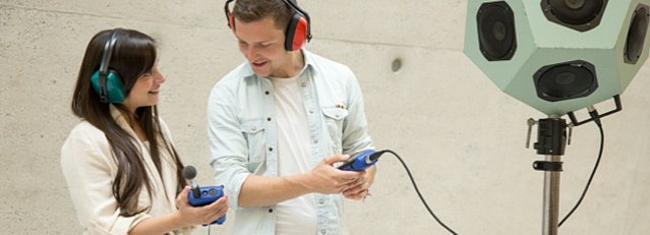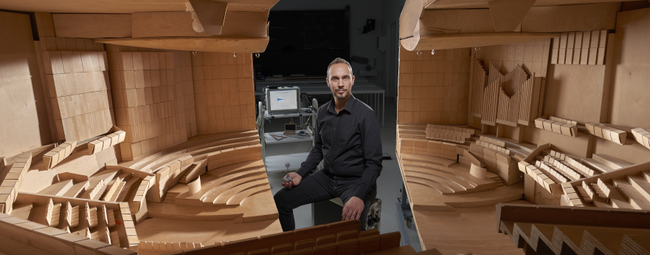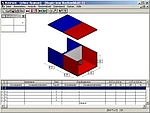Architectural Acoustics
Lecture
In the first part of the lecture, the basics of building acoustics are discussed. The main focus is on the definitions and standards of building acoustics and the planning of airborne and impact sound insulation in buildings. For example, the design of single- and multi-shell building components, e.g. wall, ceiling and floor constructions, doors and window soundproofing, is discussed in detail. For this purpose, the requirements and calculation methods according to DIN 4109 and DIN EN 12354 are to be presented and applied. In the second part of the lecture, the fundamentals of room acoustics are discussed. These include topics such as: sound absorbers (construction of resonators, porous absorbers ...), sound reflectors, statistical room acoustics, geometric room acoustics, the assessment of rooms, musical instruments (frequency range, sound power, directivity), measurement technology of room acoustics, opera, concert, and Theaters of the world, room acoustics design (“Statistical” and “Numerical” models in use, arrangement of musical instruments) as well as the requirements for classrooms and workrooms.
Report on model measurement technology on the model of the Dresden Philharmonic
Room Acoustics
Both in performance rooms, such as theaters and opera houses, and in work rooms, such as open-plan offices, workshops and classrooms, a significantly better well-being of people can be achieved through targeted room acoustic design. Some standards and recommendations exist for this. In the lecture, the students should be given an overview of this set of rules. The students also learn the acoustic design of rooms on the basis of engineering calculation methods. In particular, the strategies of room acoustic design are taught using practical examples. Subjective sensation variables and associated objective parameters for speech performances Subjective quantities of sensation and associated objective parameters for musical performances Room acoustic computer simulation with EASE
Building Acoustics
In the field of building acoustics, students are introduced to sub-areas such as noise protection in urban planning, airborne and structure-borne noise propagation in buildings, sound insulation and sound absorption of building parts and building materials and acquire basic knowledge of building acoustics planning, project planning and calculation on the basis of corresponding DIN standards. With the help of commercial calculation software, various buildings are designed in terms of sound technology.
- sound fields in rooms
- airborne noise impact sound
- Requirements according to DIN 4109
- Walls (flexible, rigid) and windows
- Multi-layer walls (plasterboard stud wall) and windows,
- doors and ceilings
- Proof of sound insulation (calculation according to DIN 4109 and DIN EN 12354)
- Calculation with BASTIAN



